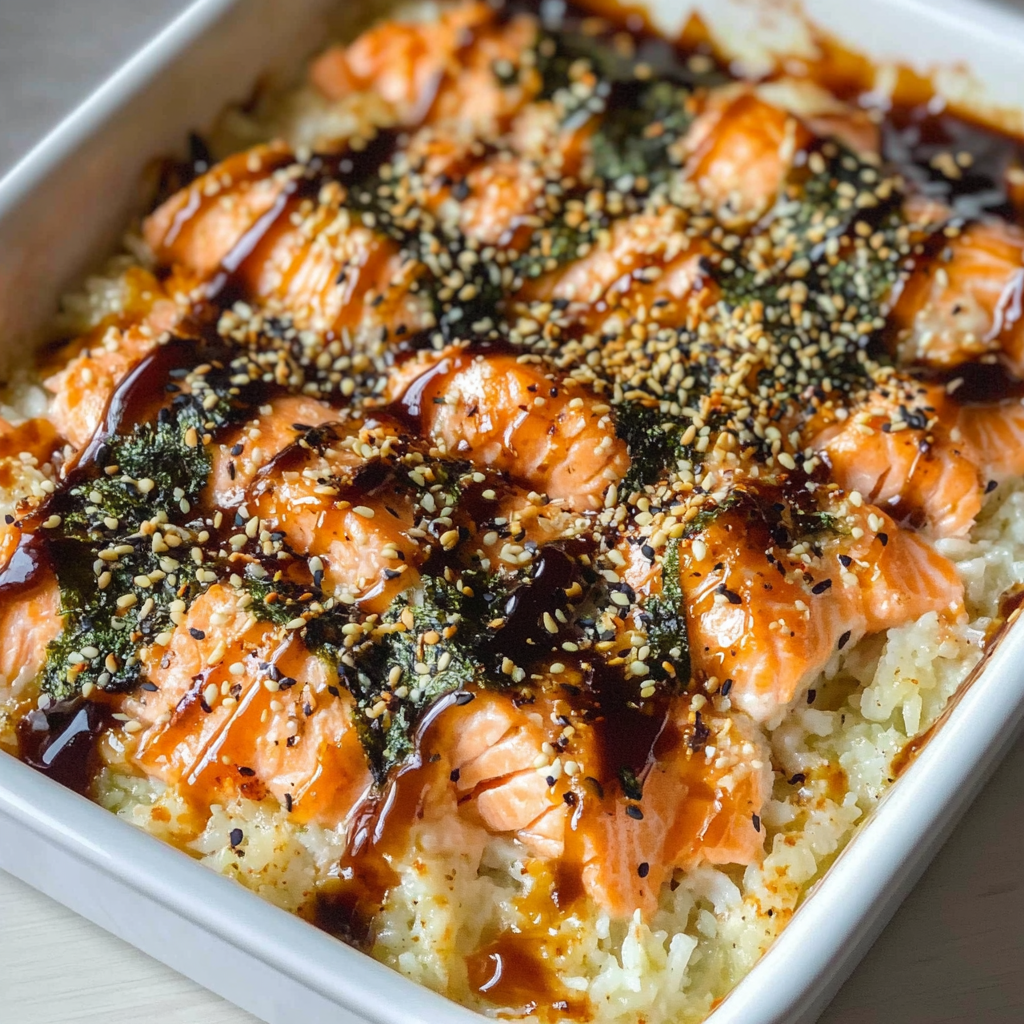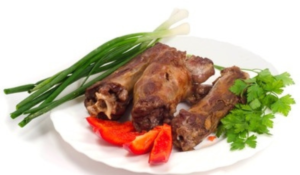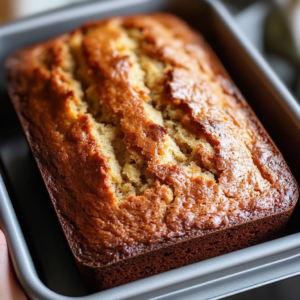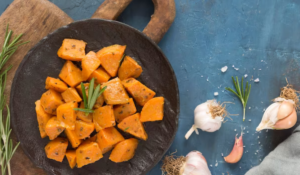Sharing is caring!
Table of Contents
ToggleIntroduction to Salmon Sushi Bake Recipe
Embark on a culinary journey with the Salmon Sushi Bake Recipe, a unique twist that marries the delicate flavors of traditional sushi with the heartwarming comfort of a baked casserole. This dish, a creative fusion of East meets West, transforms the complexity of sushi-making into an approachable and enjoyable cooking experience for chefs of all levels.
The Salmon Sushi Bake Recipe offers a tantalizing blend of tender, flavorful salmon layered atop perfectly seasoned sushi rice, all baked to golden perfection. This introduction to the recipe guides you through selecting the finest ingredients, ensuring each bite is a delightful explosion of flavors. Ideal for gatherings, family dinners, or a special treat, this recipe redefines sushi, turning it into a dish that’s both impressive and comforting. As you prepare to create this masterpiece, get ready to indulge in a world where simplicity meets sophistication, and every forkful is a testament to culinary innovation.

The Origin of the Salmon Sushi Bake Recipe
The Salmon Sushi Bake Recipe traces its roots to the innovative kitchens where chefs sought to blend traditional sushi’s elegance with the convenience and comfort of a casserole. This dish emerged as a creative response to the growing desire for accessible yet sophisticated home cooking. Sushi, originally a Japanese delicacy, involves meticulously rolling and slicing ingredients to create bite-sized pieces. However, the sushi bake revolutionized this process, offering a deconstructed version that maintains the essence of sushi but in a more communal and shareable form.
The introduction of the Salmon Sushi Bake Recipe marked a significant evolution in the world of sushi. It caters to the fast-paced lifestyle of modern diners who crave the flavors of traditional sushi but need quicker, more practical meal options. This innovative recipe combines layers of fluffy, seasoned sushi rice with luscious salmon, often mixed with creamy mayonnaise and savory seasonings. Once assembled, the dish is baked until it achieves a delightful crispness on top, contrasting with the soft, flavorful base.
This culinary innovation quickly gained popularity, becoming a staple at potlucks, family gatherings, and social events. It allows sushi enthusiasts to experience the beloved flavors of sushi in a new, exciting format. The Salmon Sushi Bake Recipe is more than a dish; it’s a testament to the evolving nature of cuisine and the fusion of different culinary traditions, creating something uniquely delicious and satisfying.
Ingredients for the Salmon Sushi Bake Recipe
Creating the perfect Salmon Sushi Bake Recipe begins with assembling the right ingredients. This dish, known for its rich flavors and satisfying texture, requires a balance of fresh and pantry-friendly components. Here’s what you need to bring this culinary delight to life:
- Salmon: Choose fresh, high-quality salmon fillets for the best taste and texture. You can also use canned salmon as a convenient alternative.
- Sushi Rice: Opt for short-grain sushi rice to ensure the base of your bake is sticky and holds together well.
- Seasonings for Rice: Enhance your sushi rice with a blend of rice vinegar, sugar, and salt, giving it that signature sushi rice flavor.
- Mayonnaise and Cream Cheese: These add creaminess to the salmon mixture, making every bite rich and indulgent.
- Soy Sauce and Sriracha: Incorporate these for a balance of umami and heat, elevating the overall flavor profile of your dish.
- Green Onions and Sesame Seeds: Sprinkle these on top for a burst of freshness and a subtle crunch.
- Seaweed Sheets: Serve these alongside your bake, allowing guests to scoop up the salmon and rice mixture, mimicking a sushi experience.
- Optional Add-ins: Feel free to get creative with additions like avocado, cucumber, or tobiko (flying fish roe) for extra texture and flavor.
Each ingredient in the Salmon Sushi Bake Recipe plays a crucial role in crafting a dish that’s both comforting and exotic. The key lies in the quality of the ingredients and the harmony they create when combined, ensuring every forkful is a delightful journey through taste and texture.
Preparing Salmon for Your Salmon Sushi Bake Recipe
Mastering the Salmon Sushi Bake Recipe starts with preparing the salmon correctly, a crucial step that ensures your dish is both flavorful and safe to eat. Here’s how to handle and prepare the salmon for your sushi bake:
- Selecting the Salmon: Opt for fresh, high-quality salmon. Look for bright, firm fillets with a fresh ocean scent. If using frozen salmon, ensure it thaws completely in the refrigerator before using.
- Handling with Care: Always use clean utensils and cutting boards when handling raw salmon to prevent cross-contamination.
- Skinning and Deboning: If your salmon fillet comes with skin and bones, carefully remove them. Slide a sharp knife between the skin and flesh, and use a gentle sawing motion to separate them. Feel along the fillet for any small bones and use tweezers to pull them out.
- Cutting into Cubes: For the sushi bake, cut the salmon into small, bite-sized cubes. This size ensures even cooking and easy mixing with other ingredients.
- Marinating (Optional): To add extra flavor, consider marinating the salmon cubes. A simple marinade can be made from soy sauce, a touch of sesame oil, and a hint of lemon juice. Marinate for about 15-20 minutes, but not too long to avoid overpowering the salmon’s natural flavor.
- Pre-Cooking: Some prefer to pre-cook the salmon slightly for safety, especially when not using sushi-grade fish. Gently sauté the cubes until they’re partially cooked – they should still be slightly raw in the center. They will cook completely when the whole dish is baked.
By carefully preparing the salmon, you ensure that your Salmon Sushi Bake Recipe will be not only delicious but also a safe and enjoyable dish for everyone.
Rice Cooking Techniques for the Salmon Sushi Bake Recipe
Achieving the perfect texture and flavor of rice is fundamental to the success of your Salmon Sushi Bake Recipe. Here’s how to cook sushi rice that’s fluffy, sticky, and seasoned just right:
- Rinse the Rice: Begin by rinsing your sushi rice under cold water until the water runs clear. This step removes excess starch, preventing the rice from becoming too sticky.
- Cooking the Rice: Use a ratio of about 1:1 for rice to water. If you’re cooking 1 cup of rice, use 1 cup of water. Cook the rice in a rice cooker or on the stove. For stovetop cooking, bring the water to a boil, add the rice, stir once, then cover and reduce to a simmer. Cook for about 18-20 minutes until the water is absorbed and the rice is tender.
- Seasoning the Rice: While the rice is hot, season it with a mixture of rice vinegar, sugar, and salt. The ratio is typically 2 tablespoons of rice vinegar, 2 tablespoons of sugar, and 1 teaspoon of salt for every cup of uncooked rice. Gently fold the seasoning into the cooked rice with a paddle or a wide spoon to avoid breaking the grains.
- Cooling the Rice: Spread the seasoned rice on a wide, shallow dish. Fan it gently as it cools to room temperature. This step helps to give the rice a glossy finish and the perfect texture for your sushi bake.
- Preparing for the Bake: Once the rice is at room temperature, spread it evenly in a baking dish. This forms the base for your Salmon Sushi Bake Recipe. Ensure it’s compact but not overly compressed to maintain a light, fluffy texture in every bite.
Mastering these rice cooking techniques will elevate your Salmon Sushi Bake Recipe, making it a dish that’s as enjoyable to prepare as it is to eat.
Assembling the Dish: Salmon Sushi Bake Recipe
Assembling your Salmon Sushi Bake is an exciting step where all the components come together to create a mouthwatering dish. Here’s how to layer and assemble your sushi bake for the best results:
- Layer the Rice: Start by spreading your cooled, seasoned sushi rice evenly in a baking dish. Aim for a layer about an inch thick. Press gently to ensure the rice is compact enough to hold together, but avoid over-compressing it, which can make it too dense.
- Add the Salmon Mixture: In a separate bowl, combine your prepared salmon cubes with mayonnaise, a dash of sriracha (for some heat), and chopped green onions. If you pre-cooked the salmon, ensure it’s cooled before mixing. Spread this salmon mixture evenly over the rice layer. The layer should be generous but not so thick that it overwhelms the rice.
- Sprinkle Toppings: Add a layer of shredded nori (seaweed) or tobiko (fish roe) for an authentic sushi flavor. Sprinkle sesame seeds and additional chopped green onions for added texture and taste.
- Bake the Dish: Preheat your oven to a moderate temperature, around 350°F (175°C). Bake the sushi bake for 10-15 minutes, or until the top is slightly golden and the edges are bubbly.
- Final Touches: Once out of the oven, let it cool for a few minutes. This rest time allows the layers to set, making it easier to serve.
- Serve and Enjoy: Serve your Salmon Sushi Bake with sheets of nori or with a spoon. Guests can scoop portions onto their plates or wrap them in nori for a traditional sushi roll feel.
By following these steps, you’ll assemble a Salmon Sushi Bake Recipe that’s not only visually appealing but also packed with layers of flavor, making every bite a delightful experience.
Baking Tips for the Perfect Salmon Sushi Bake Recipe
Achieving the ideal bake for your Salmon Sushi Bake Recipe involves more than just setting the oven’s temperature. Here are some essential tips to ensure your sushi bake turns out perfectly every time:
- Preheat Your Oven: Always start with a preheated oven. For most sushi bakes, 350°F (175°C) works well. This ensures even cooking right from the start.
- Use the Right Dish: Opt for a shallow, oven-safe dish that spreads heat evenly. Glass or ceramic dishes are excellent choices as they maintain a consistent temperature throughout the bake.
- Layer Evenly: When assembling your sushi bake, ensure each layer is even. This uniformity helps in cooking each component thoroughly and consistently.
- Avoid Overcrowding: Don’t overfill your baking dish. Keeping a bit of space at the top prevents the ingredients from bubbling over and ensures heat circulates well.
- Monitor the Bake: Keep an eye on your sushi bake, especially towards the end of the baking time. Look for a lightly golden top and bubbly edges as signs it’s done. Overbaking can dry out the salmon and make the rice too hard.
- Let It Rest: Once out of the oven, let your sushi bake rest for a few minutes. This resting period allows the flavors to meld together and makes serving easier.
- Serve Warm: The Salmon Sushi Bake Recipe is best enjoyed warm. If you need to reheat, do so gently in the oven to retain moisture and texture.
By following these baking tips, your Salmon Sushi Bake Recipe will turn out delicious, with perfectly cooked rice and a flavorful, moist salmon layer, ready to impress at any gathering.
Serving Suggestions for the Salmon Sushi Bake Recipe
Once you’ve perfected your Salmon Sushi Bake Recipe, presenting it in a way that complements its flavors and textures is key. Here are some creative serving suggestions to enhance your sushi bake experience:
- Pair with Nori Sheets: Offer sheets of nori (seaweed) on the side. Guests can scoop a portion of the sushi bake onto a nori sheet, roll it up, and enjoy a deconstructed sushi roll.
- Garnish Wisely: Garnish your sushi bake with finely sliced green onions, sesame seeds, and a drizzle of spicy mayo or eel sauce for added flavor and visual appeal.
- Serve with Pickled Ginger: Accompany your dish with pickled ginger. Its refreshing, tangy taste balances the richness of the salmon and the creaminess of the mayo.
- Include Soy Sauce: Provide a small dish of soy sauce for dipping. It adds an umami flavor that complements the salmon and rice.
- Offer Chopsticks and Spoons: While chopsticks offer an authentic sushi experience, not everyone is comfortable using them. Providing spoons ensures all your guests can enjoy the dish with ease.
- Consider a Side Salad: Serve a light, refreshing side salad, like a cucumber or seaweed salad, to balance the richness of the sushi bake.
- Refreshing Beverages: Pair your Salmon Sushi Bake with a refreshing drink like green tea, light beer, or a crisp white wine that complements the flavors without overpowering them.
By considering these serving suggestions, you elevate the experience of enjoying your Salmon Sushi Bake Recipe, turning a simple meal into a memorable dining event.
Nutritional Information for the Salmon Sushi Bake Recipe
Understanding the nutritional profile of your Salmon Sushi Bake Recipe helps you appreciate not just its flavors, but also its contribution to your overall diet. This dish, while indulgent, also packs a variety of nutrients. Here’s a breakdown of what each serving typically offers:
- Calories: A single serving of Salmon Sushi Bake can range from 300 to 400 calories, depending on the ingredients’ portion sizes and any additional toppings or sauces.
- Protein: Salmon is an excellent source of high-quality protein. A serving of this dish can provide about 20-25 grams of protein, essential for muscle repair and growth.
- Carbohydrates: Sushi rice forms the base of the bake, contributing to the carbohydrate content. A serving may contain 40-50 grams of carbohydrates, offering energy for your daily activities.
- Fats: Salmon is rich in omega-3 fatty acids, known for their heart health benefits. The addition of mayonnaise and cream cheese also adds to the fat content, which can total around 10-15 grams per serving.
- Vitamins and Minerals: This dish is a good source of several vitamins and minerals. Salmon provides vitamins D and B12, along with selenium and phosphorus. The seaweed and vegetables add a range of micronutrients like iodine, vitamin K, and folate.
- Sodium: Due to ingredients like soy sauce and seasoned rice vinegar, sushi bakes can be high in sodium. It’s advisable to moderate your portion size if you are monitoring your sodium intake.
Remember, the exact nutritional values of your Salmon Sushi Bake Recipe can vary based on the ingredients and quantities used. However, this dish can be part of a balanced diet, offering both flavor and nutrition. Enjoy it as a treat within a healthy and diverse eating plan.
Kid-Friendly Adaptations for the Salmon Sushi Bake Recipe
Adapting your Salmon Sushi Bake Recipe to be more kid-friendly is a great way to introduce younger palates to diverse flavors while ensuring they enjoy the meal. Here are some tips to make this dish a hit with the little ones:
- Mild Flavors: Kids often prefer milder flavors, so consider reducing or omitting spicy ingredients like sriracha. Instead, focus on the creamy and savory aspects of the dish.
- Fun Shapes: Transform the sushi bake into fun shapes using cookie cutters. Kids will love eating stars, hearts, or animal-shaped sushi bakes.
- Involving Kids in Preparation: Get the kids involved in layering the rice and spreading the salmon mixture. This hands-on experience can make them more excited about eating the dish.
- Colorful Vegetables: Add finely chopped vegetables like carrots, bell peppers, or cucumbers for extra color and nutrition. Presenting a rainbow of colors can make the dish more appealing to kids.
- Cheese Topping: Many children love cheese, so consider adding a layer of mild, shredded cheese on top before baking. It melts into a gooey, kid-friendly topping.
- Serving Size: Offer smaller portions to make it easier for kids to eat and reduce food waste. You can always offer seconds if they want more!
- Dipping Sauces: Provide a variety of dipping sauces like teriyaki, sweet soy, or a mild mayo mixture. Kids often enjoy the interactive aspect of dipping their food.
- Non-Spicy Sides: Serve the sushi bake with sides that are popular with kids, such as edamame, fruit slices, or a simple salad.
By incorporating these kid-friendly adaptations, your Salmon Sushi Bake Recipe can become a delightful meal that the whole family, including the youngest members, can enjoy together.
Common Mistakes to Avoid in Your Salmon Sushi Bake Recipe
To ensure your Salmon Sushi Bake Recipe turns out perfectly, it’s crucial to be aware of common pitfalls. Avoiding these mistakes can make the difference between an okay dish and a fantastic one:
- Overcooking the Rice: Sushi rice should be tender but firm. Overcooking it can lead to a mushy texture that doesn’t hold up well in the bake.
- Not Rinsing the Rice: Skipping the rinsing process leaves excess starch on the rice, causing it to become too sticky and clumpy.
- Using the Wrong Rice: Stick to short-grain sushi rice. Other types like basmati or long-grain won’t provide the right texture or flavor.
- Overloading the Dish: Adding too many ingredients or too much of one component can overpower the others. Balance is key.
- Not Preheating the Oven: A non-preheated oven can lead to uneven cooking. Always preheat to the recommended temperature.
- Underseasoning the Rice: The rice should be flavorful on its own. Not adding enough vinegar, sugar, and salt can result in bland sushi bake.
- Overcooking the Salmon: If you choose to pre-cook the salmon, be careful not to overdo it. It will cook further in the oven, so it should be slightly undercooked beforehand.
- Skipping the Resting Time: Allow your sushi bake to rest for a few minutes after baking. This helps the layers set and improves the overall texture.
- Ignoring Presentation: How you present your dish can greatly affect its appeal. Take the time to garnish and serve it attractively.
By avoiding these common mistakes, you’ll enhance your chances of creating a delicious and visually appealing Salmon Sushi Bake that everyone will love.
Expert Chef Insights for Perfecting Your Salmon Sushi Bake Recipe
When it comes to mastering the Salmon Sushi Bake Recipe, a few expert tips can elevate your dish from good to exceptional. Here’s what seasoned chefs recommend:
- Quality Ingredients Matter: Start with the freshest salmon you can find. Sushi-grade is ideal. The quality of your ingredients directly impacts the flavor and texture of the final dish.
- Balance the Flavors: A great sushi bake isn’t just about the salmon; it’s about achieving a harmony of flavors. Ensure your rice is well-seasoned and consider the balance of creaminess, umami, and a hint of acidity in your dish.
- Texture is Key: Aim for a contrast in textures. The rice should be fluffy and slightly sticky, while the top layer should have a slight crispness to it after baking.
- Don’t Overbake: Keep an eye on your oven. Overbaking can dry out the salmon and make the rice hard. You want it just hot enough to meld the flavors together.
- Rest Before Serving: Let your sushi bake rest for a few minutes after removing it from the oven. This allows the ingredients to settle and flavors to meld.
- Experiment with Toppings: While traditional toppings are great, don’t be afraid to experiment. Additions like avocado, tobiko, or even a sprinkle of furikake can add an extra dimension to your dish.
- Presentation Matters: Serve your sushi bake in a way that’s not just delicious but also visually appealing. A well-presented dish enhances the overall dining experience.
- Stay True to Sushi Principles: Even though it’s a bake, remember the essence of sushi is simplicity and elegance. Keep your flavors and presentation refined.
By incorporating these insights from expert chefs, your Salmon Sushi Bake Recipe will not only taste fantastic but also carry a touch of professional craftsmanship.
Advanced Techniques for Enhancing Your Salmon Sushi Bake Recipe
Elevating your Salmon Sushi Bake Recipe involves more than just following the basic steps. Here are some advanced techniques to add depth and sophistication to your dish:
- Infuse Flavors into the Rice: Instead of just seasoning your sushi rice with vinegar, sugar, and salt, consider infusing the vinegar with kombu or ginger for an extra flavor layer.
- Use a Blowtorch: After baking, briefly torch the top of your sushi bake. This adds a smoky flavor and a slightly charred texture, similar to flame-seared sushi.
- Marinate the Salmon: For deeper flavor, marinate your salmon in a mixture of soy sauce, mirin, and a hint of sesame oil before adding it to your bake.
- Layer with Precision: Practice meticulous layering. Ensure each layer is even and complements the others in terms of texture and flavor.
- Experiment with Sauces: Create your signature sauce to drizzle over the baked dish. Something with a base of mayo and Sriracha, sweetened with a bit of honey, can add a unique twist.
- Add a Crunch Factor: Incorporate crispy elements like tempura flakes or fried onions on top of your bake before serving. This adds a delightful crunch that contrasts the creamy and soft textures.
- Perfect Your Garnishes: Garnish with precision and creativity. Use thinly sliced green onions, a sprinkle of sesame seeds, or even edible flowers for an elegant finish.
- Serve with Homemade Pickles: Complement your sushi bake with homemade pickles like quick-pickled cucumbers or radishes. They add a refreshing element to the rich dish.
By mastering these advanced techniques, your Salmon Sushi Bake Recipe will not only taste incredible but also showcase your culinary skills, making it a standout dish at any gathering.
FAQ for the Salmon Sushi Bake Recipe
- Can I use canned salmon for this recipe? Yes, you can use canned salmon as a convenient alternative to fresh salmon. Just ensure it’s drained well and flaked before use.
- Is it necessary to pre-cook the salmon? Pre-cooking the salmon is not mandatory, especially if you’re using sushi-grade fish. However, for extra safety, you can lightly cook it before adding it to the bake.
- How do I store leftovers? Store any leftovers in an airtight container in the refrigerator. They should last for up to two days. Reheat gently in the oven or microwave before serving.
- Can I make this recipe gluten-free? Yes, you can make this dish gluten-free by using tamari instead of regular soy sauce and ensuring all other ingredients are gluten-free.
- What can I use instead of sushi rice? While sushi rice is ideal for its sticky texture, you can use other short-grain rice varieties as a substitute.
- Can I add other seafood to this recipe? Absolutely! Feel free to add cooked shrimp, crab meat, or even octopus for a seafood variety in your sushi bake.
- Is the Salmon Sushi Bake Recipe suitable for a potluck? Yes, this dish is perfect for potlucks as it’s easy to transport and can be served at room temperature or heated up.
- How can I make my sushi bake spicier? Increase the heat by adding more sriracha to the salmon mixture or by drizzling a spicy mayo on top before serving.
By keeping these FAQs in mind, you’ll be well-prepared to create a delicious and successful Salmon Sushi Bake that’s sure to impress.
Conclusion
In conclusion, mastering the Salmon Sushi Bake Recipe offers a delightful culinary adventure that combines the traditional flavors of sushi with the heartwarming comfort of a baked casserole. Whether you’re a seasoned chef or a beginner in the kitchen, this dish provides a versatile and enjoyable cooking experience. From selecting the best ingredients to the final assembly and baking, each step offers a chance to infuse your personal touch, making the dish uniquely yours. The versatility of the recipe allows for various adaptations, making it suitable for different dietary preferences and occasions.
By following the tips and techniques shared, you can ensure your sushi bake is not just a dish, but a memorable gastronomic experience that delights the senses. Whether for a family dinner, a social gathering, or a potluck, the Salmon Sushi Bake is sure to be a crowd-pleaser, leaving your guests impressed with your culinary skills.






1 thought on “Perfecting the Salmon Sushi Bake Recipe: Essential Guide”
Comments are closed.